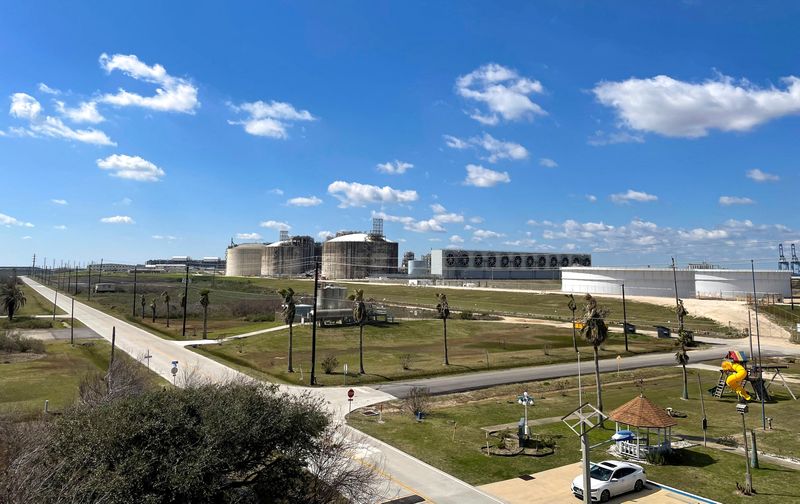By Curtis Williams
HOUSTON (Reuters) -The second-largest U.S. liquefied natural gas (LNG) export facility has been running below 80% of its capacity due to technical problems, data from financial firm LSEG showed, denting U.S. exports.
Since Jan. 15, Freeport LNG's Quintana, Texas, liquefaction plant has been operating without at least one of its three gas-processing trains. In the last two weeks, it has taken barely enough gas for one of its trains to fully operate.
On Thursday, it took in 61 million cubic feet (mcf) of gas, compared to its capacity for 2.2 billion cubic feet per day (bcfd), LSEG data showed.
A Freeport LNG spokesperson declined to comment.
The company has blamed a January freeze for damage to its Train 3 motors, and in March said it had taken proactive steps to inspect and would take two other trains offline for servicing.
"Future LNG projects will want to study what went wrong with Freeport's design," Ira Joseph, a senior research associate at Columbia University's Center on Global Energy Policy, said on social media site X.
The plant's "lack of reliability is really sending Henry Hub (U.S. natural gas futures) for a wild ride," wrote Joseph.
Henry Hub prices have fallen from $2.90 per million cubic feet (mmcf) on Jan. 16 to $1.63 per mmcf on Thursday.
Freeport's operating woes were evident even before a 2022 fire knocked its facility offline for months and appear to have worsened after the plant returned to service last year, according to the LSEG data.
In the 365 days up to the June 7, 2022, fire, Freeport's average utilization rate was 1.820 bcfd or 80% of its maximum 2.2 bcfd capacity. In the last 12 months that rate has fallen to an average of 1.625 bcfd or 72% of maximum flow rate.

The Quintana plant has had the lowest gas utilization rate in the U.S., behind Venture Global LNG's Calcasieu Pass, Louisiana, plant with its 80% utilization rate while undergoing commissioning, the LSEG data shows.
Other U.S. LNG plants are operating at an average 85-87% capacity, LSEG data shows.